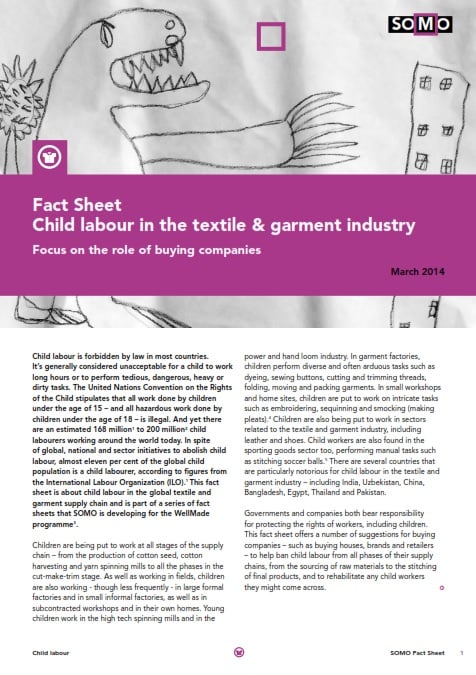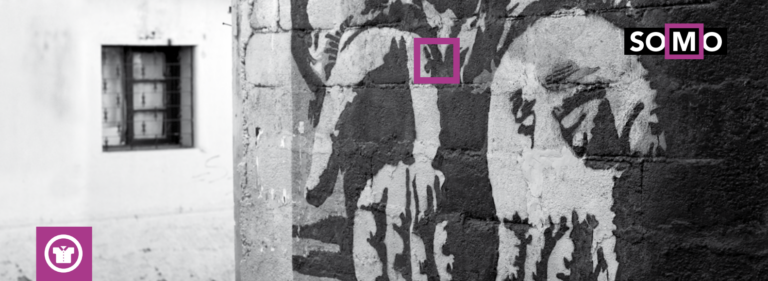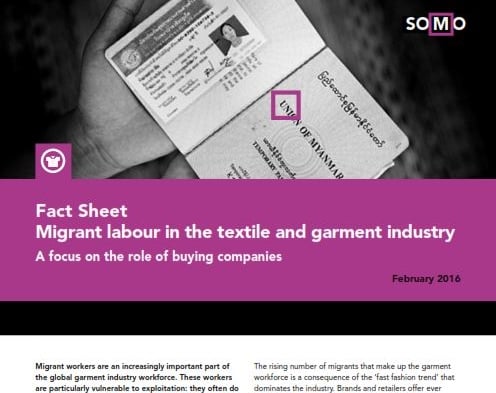
Fact Sheet: Child labour in the textile & garment industry
Focus on the role of buying companies
This fact sheet is about child labour in the global textile and garment supply chain, particularly in Asia. Children are being put to work at all stages of the supply chain – from the production of cotton seed, cotton harvesting and yarn spinning mills to all the phases in the cut-make-trim stage. As well as working in fields, children are also working in large formal factories and in small informal factories, as well as in sub-contracted workshops and in their own homes. Young children are working in the high tech spinning mills, in the power loom industry, as well as weaving on hand looms. In garment factories, children perform diverse and often arduous tasks such as dyeing, sewing buttons, cutting and trimming threads, folding, moving and packing garments. In small workshops and home sites, children are put to work on intricate tasks such as embroidering, sequinning and smocking (making pleats). Children are also being put to work in sectors related to the textile and garment industry, including leather and shoes. Child workers are also found in the sporting goods sector too, performing manual tasks such as stitching soccer balls. There are several countries that are particularly notorious for child labour in the textile and garment industry – including India, the Ukraine, China, Bangladesh, Egypt, Thailand and Pakistan. Governments and companies bear equal responsibility for protecting the rights of workers, including children. This fact sheet offers a number of suggestions for buying companies – such as buying houses, brands and retailers – to help ban child labour from all phases of their supply chains, from the sourcing of raw materials to the stitching of final products, and to rehabilitate any child workers they might come across.
Partners
Publication
Related content
-
Fact Sheet: Unsafe Garment Factory Buildings Published on:
 Pauline OvereemPosted in category:Publication
Pauline OvereemPosted in category:Publication Pauline Overeem
Pauline Overeem
-
Fact Sheet: Forced labour Published on:
 Pauline OvereemPosted in category:Publication
Pauline OvereemPosted in category:Publication Pauline Overeem
Pauline Overeem
-
 Martje TheuwsPosted in category:Publication
Martje TheuwsPosted in category:Publication Martje Theuws
Martje Theuws
-
 Martje TheuwsPosted in category:Publication
Martje TheuwsPosted in category:Publication Martje Theuws
Martje Theuws
-
 Pauline OvereemPosted in category:Publication
Pauline OvereemPosted in category:Publication Pauline Overeem
Pauline Overeem

